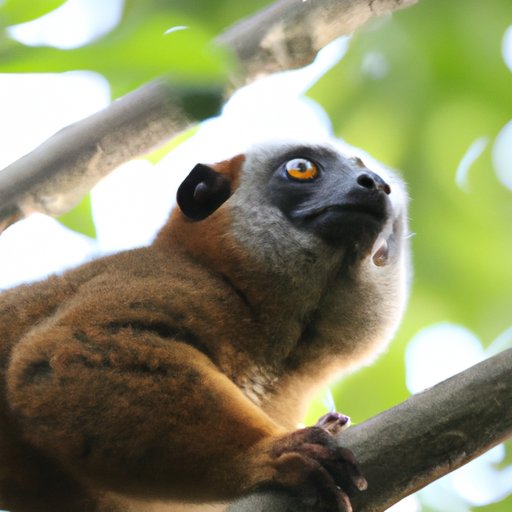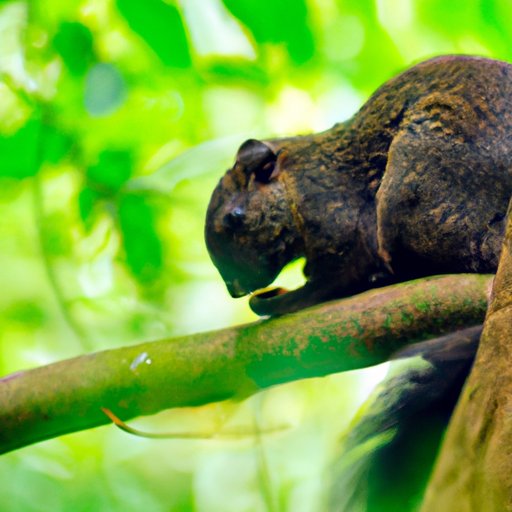Introduction
Endemic species are a hot topic in conversations about biodiversity and conservation. These species, which are found in a particular region and nowhere else on the planet, are critical to understanding how our planet’s ecosystems work and how we can protect them.
There are many reasons why endemic species matter. They represent unique evolutionary histories, and each species has a unique role to play in the ecosystem it inhabits. Endemic species also serve as a barometer for environmental health and can provide early warning signals of changes to ecosystems.
The Beginner’s Guide to Understanding Endemic Species: What They Are and Why They Matter
Endemic species are species that are found in a specific geographic area and nowhere else in the world. This is in contrast to non-endemic species, which can be found in multiple regions of the world. Endemic species are important for conservation efforts because they represent unique adaptations and evolutionary histories that are important to preserve.
Endemic species can also be good indicators of environmental health. This is because their localized distribution means that they are sensitive to changes in their ecosystem. If an endemic species starts to decline in population numbers, this could be a sign that there are problems with the environment.

Exploring the World of Endemic Life: Examples from Around the Globe
There are a number of well-known examples of endemic species that are used to illustrate the importance of this phenomenon. For example, the famous Galapagos finches are a group of closely related bird species that are endemic to the Galapagos Islands. These birds have evolved unique beak shapes and sizes that allow them to exploit different food sources. Another example is the Hawaiian honeycreepers, which are a group of brightly colored birds found only in Hawaii. These birds have evolved unique beaks that allow them to feed on nectar from flowers.
Endemic species have unique adaptations, which have enabled them to evolve in isolation. As these species have evolved in a specific geographic region, they have had to adapt to the specific climate, food sources, and predators that are found in that region. This has led to the development of unique physical and behavioral traits.
Unfortunately, many endemic species are under threat from habitat loss and climate change. This means that it is more important than ever to protect these unique species and the ecosystems they inhabit.
The Science Behind Endemicity: How Species Become Endemic to a Region
The process by which species become endemic to a region is a complex one and involves a number of factors. One of the key factors is geographic isolation. This can occur when a group of organisms becomes separated from the rest of the population, either because of a physical barrier (like a mountain range or a river) or because of other factors like climate or competition for resources.
Over time, these isolated populations may evolve in different ways due to genetic drift, natural selection, and other factors. This can lead to the development of unique physical and behavioral traits that are tailored to the specific environment in which the species lives. Eventually, these populations may become so distinct from the original population that they are considered to be a separate species entirely.
Researchers study endemic species and their evolutionary history using a variety of techniques, including molecular biology, genetics, and comparative anatomy. By understanding how these species evolved, scientists can gain insight into the processes of speciation and the role that environment plays in shaping the development of species.
Discovering Endemic Species in Your Own Backyard: How to Identify and Appreciate Them
While many endemic species are found in far-flung regions of the world, there are also plenty of examples of endemic species closer to home. By learning to identify and appreciate the biodiversity around us, we can gain a better understanding of how ecosystems work and what we can do to protect them.
There are a number of resources available to help identify endemic species, including field guides and citizen science programs. By contributing to science through citizen science programs, individuals can help researchers monitor changes to ecosystems and track populations of key species over time.
Why Endemic Species Are Important Indicators of Environmental Health and Biodiversity
Endemic species play a critical role in monitoring environmental health and detecting changes in ecosystems. If an endemic species starts to disappear from an ecosystem, it may be a sign that there are issues with habitat quality, food availability, or other factors. This makes endemic species excellent indicators of overall ecosystem health and makes them important subjects of study and conservation.
Additionally, endemic species are often keystone species in their respective ecosystems. This means that they have a disproportionate impact on the other plants and animals around them. If an endemic species disappears from an ecosystem, it can have a cascading effect on the other species that rely on it, leading to loss of biodiversity and ecological function.
The Link Between Endemic Species and Conservation: Challenges and Opportunities
Protecting endemic species is a challenging task that requires a multi-faceted approach. One of the key challenges is funding, as conservation efforts can be expensive and difficult to sustain over time. Additionally, conservation efforts may require cooperation between multiple stakeholders, including local communities, governments, and conservation organizations.
Despite these challenges, there are a number of success stories and innovative conservation strategies aimed at protecting endemic species and their habitats. For example, some conservation organizations are working with local communities to develop sustainable tourism initiatives that provide economic opportunities while also protecting important ecosystems.
Endemic Species and Cultural Significance: Exploring the Connections between Local Communities and Unique Wildlife
Endemic species are often integral to the cultural traditions and practices of local communities. By respecting and conserving these species, we can both protect biodiversity and support these important cultural traditions.
For example, many indigenous communities have traditional knowledge and practices that incorporate endemic species. These communities may use endemic plants for medicinal purposes, or incorporate endemic animals into their creation stories and cultural practices.
Conclusion
Endemic species are a critical component of biodiversity and important indicators of environmental health. Protecting these species is an ongoing challenge, but one that is essential for the health of our planet’s ecosystems and the well-being of local communities. By learning about endemic species and supporting conservation efforts, we can help protect these unique species and the ecosystems they inhabit for future generations to enjoy.
